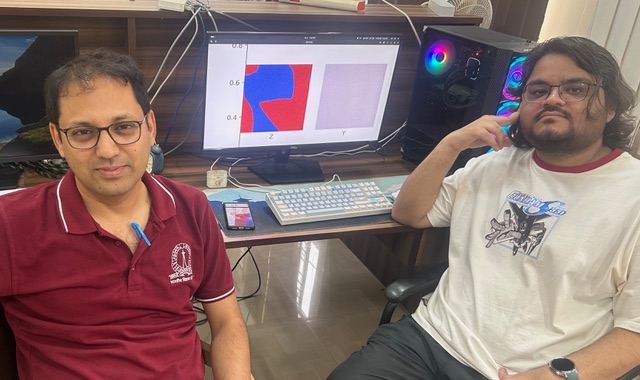CUDA-METRO: Scalable spin texture simulator

Atomistic spin texture simulations are crucial for understanding and predicting the behaviour of magnetic materials at the nanoscale. The Metropolis Monte Carlo (MC) method is frequently utilised for atomistic spin texture simulations as an algorithm to investigate the phase space of a system and is especially effective for calculating equilibrium properties. Efficient parallelisation of this simulation is challenging since the evolving states are typically not independent.
Researchers at the Department of Electronic Systems Engineering led by Santanu Mahapatra have focused on simulating magnetic phase transitions under the anisotropic Heisenberg Model in a very high dimensional space, which is important for emerging two-dimensional (2D) magnetism and nontrivial topological spin textures such as skyrmions. Previous attempts for parallelisation are restricted to the simpler models and not applicable to 2D materials because of their inherent anisotropy, complex crystal structures and long-range interactions.
MC simulation of the anisotropic Heisenberg model is very challenging owing to the large number of dependent calculations between lattice points. The calculation scales as N2, where N represents the dimension of a square lattice. This becomes intensive when N exceeds 100, which is a realistic estimate for visually investigating topological spin textures, important for next-generation information carriers. Existing open-source software for atomistic spin texture simulations are based on the single spin update method, which is very inefficient for finding the ground state for ultra large supercells.
The new study presents CUDA-METRO, a graphical processing unit (GPU) based open-source code for accelerated atomistic-spin simulation. This is based on a new algorithm which harnesses the extreme potential of the GPU to access the ground state of ultra large supercells at record time.
The team evaluated the code by precisely simulating complex topological spin textures and temperature-dependent magnetic phase transitions for diverse 2D crystal structures with long-range magnetic interactions. They show exceptional acceleration while finding the ground state of a 750 × 750 supercell from an initial random spin configuration in 9 hours using an A100-SXM4 GPU.

REFERENCE:
Hait A, Mahapatra S, CUDA-METRO: Parallel Metropolis Monte Carlo for 2D Atomistic Spin Texture Simulation, Journal of Open Source Software (2025).
https://joss.theoj.org/papers/10.21105/joss.07589
LAB WEBSITE: https://faculty.dese.iisc.ac.in/santanu/





